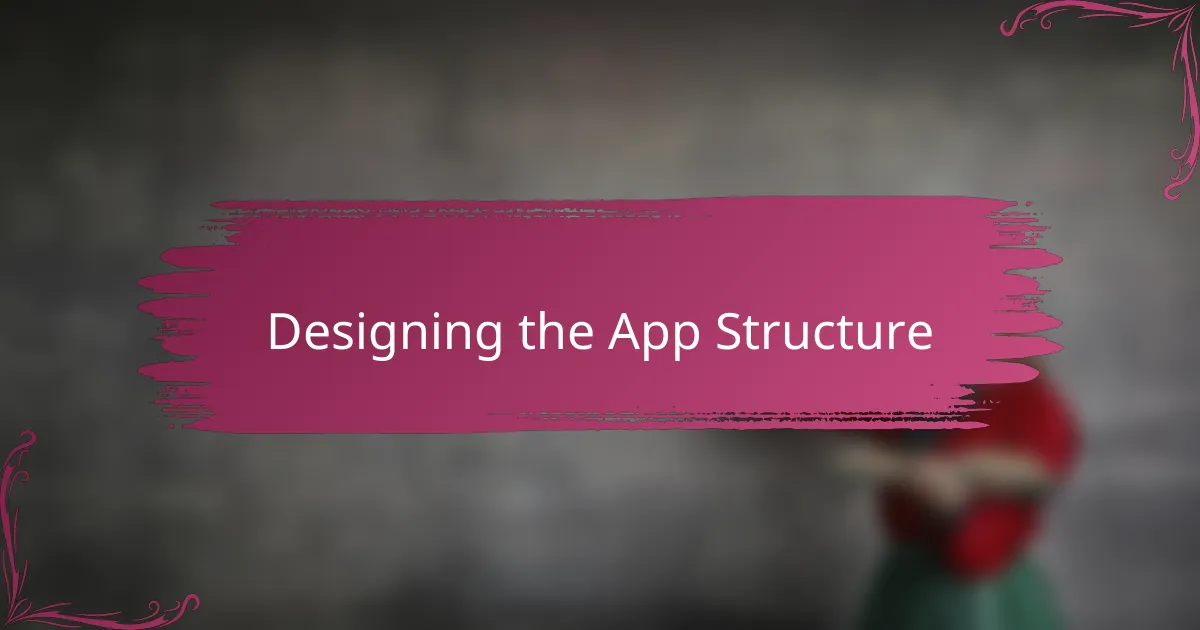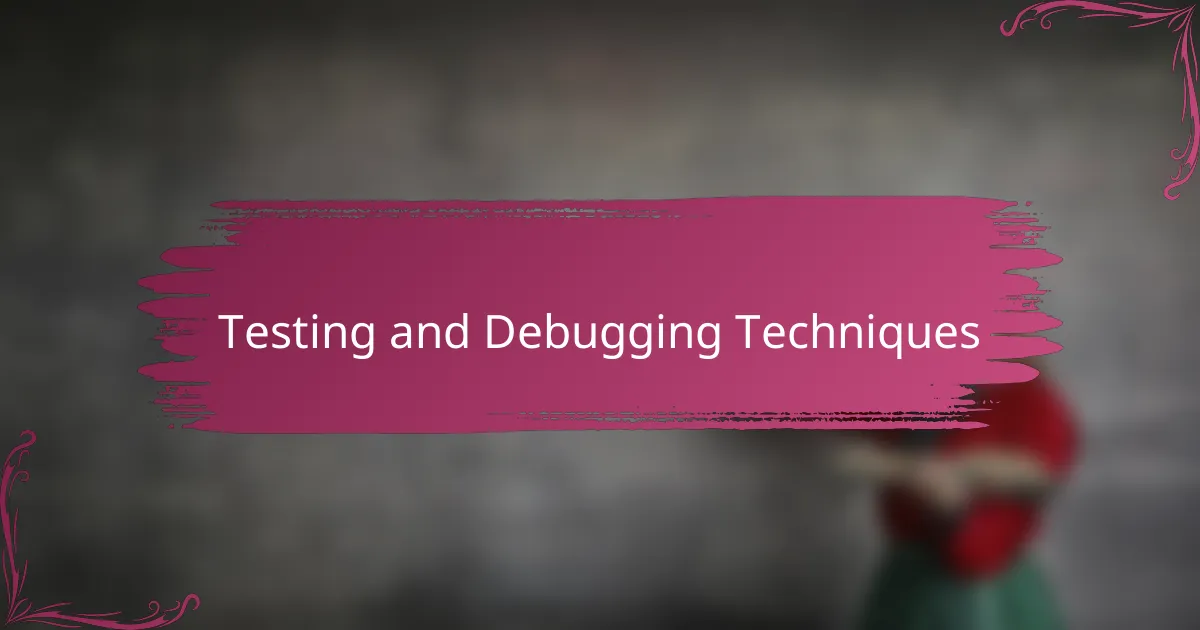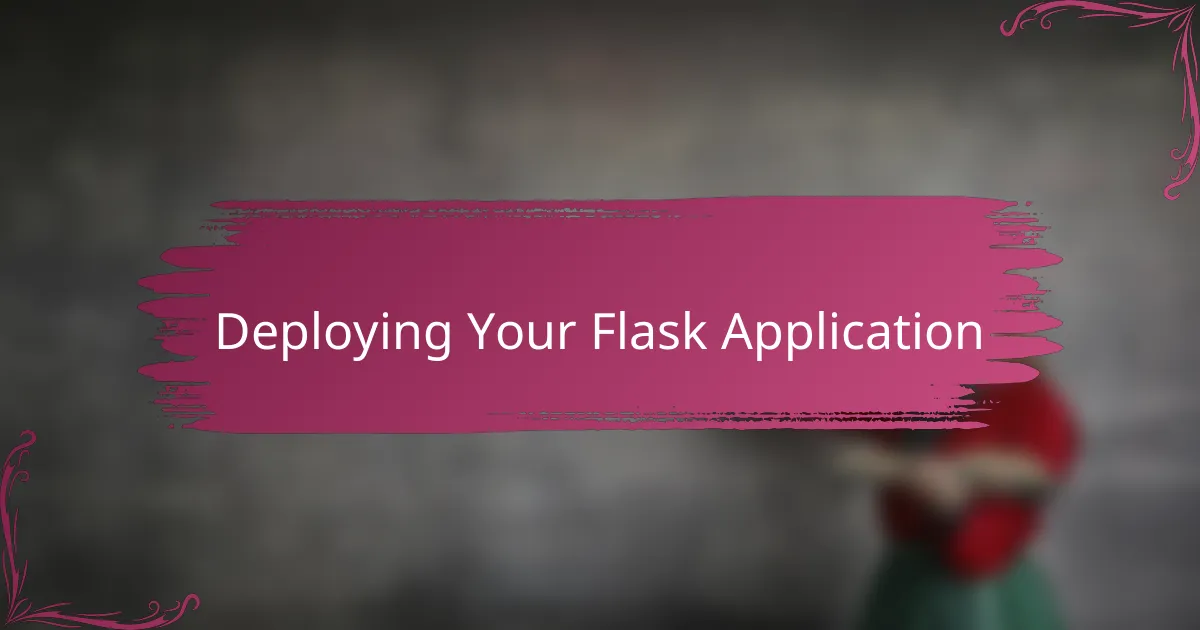Key takeaways
- Flask’s minimalism encourages creativity and offers a flexible environment for web development.
- Organizing the app structure logically helps reduce bugs and streamline the coding process.
- Implementing user interactions enhances the app’s responsiveness and provides a better user experience.
- Testing and debugging are crucial steps that prevent issues and improve overall app quality before deployment.

Introduction to Flask and Python
When I first discovered Python, its simplicity and readability immediately caught my attention. It felt like the perfect language for turning ideas into working programs without getting bogged down by complex syntax. Have you ever experienced that satisfying moment when code just flows effortlessly? That’s exactly what Python offers.
Flask, on the other hand, was a pleasant surprise. Coming from more heavyweight frameworks, I found Flask’s minimalism refreshing—it gives you just enough tools to build web apps without overwhelming you. This lightweight nature made me feel in control, like I was crafting something unique rather than following rigid rules.
I often think about how Flask’s flexibility invites creativity. It’s like a blank canvas, encouraging me to experiment and learn as I build. Have you ever wondered how such a tiny framework can support powerful web applications? Flask shows you the answer with every project.

Setting Up Your Development Environment
Getting your development environment ready felt a bit like setting up a cozy workspace for me. I started by installing Python—making sure I had a version compatible with Flask—it’s amazing how a small version mismatch can cause endless headaches. Have you ever spent hours troubleshooting just to find out your Python version was the culprit? That frustration reminded me how crucial a clean setup is.
Next came creating a virtual environment. At first, I underestimated its value, but once I isolated my project’s dependencies, I experienced a newfound sense of freedom. No more conflicting packages or broken projects. Setting this up felt like putting on noise-canceling headphones—everything outside the project just faded away, letting me focus.
Finally, installing Flask itself was surprisingly quick. The command line felt like a friendly assistant, welcoming me to type ‘pip install flask’ and then stepping back to let me take control. It was a simple moment, but it sparked excitement—like the starting gun of a race, I was ready to dive into coding my app. Have you ever felt that rush just before building something new? That’s exactly how I felt.

Designing the App Structure
Designing the app structure was a pivotal moment for me—it felt like sketching the blueprint before constructing a house. I found that organizing files and folders logically not only helped me stay focused but also made the coding process smoother. Have you ever opened a project months later only to be greeted by chaos? That’s a pitfall I wanted to avoid from the start.
I decided to separate concerns by creating folders for templates, static assets like CSS and JavaScript, and the core Python code. This clear division felt like setting distinct rooms in my digital home, making it easier to find and update parts without wandering in confusion. It gave me a comforting sense of control amid the complexity.
One thing that surprised me was how much mindfulness in structure reduced bugs and sped up development. When each piece had its place, I didn’t waste time hunting for missing files or chasing errors caused by messy imports. Have you noticed how a little planning upfront can save a lot of headaches later? Designing the app structure taught me that lesson in a very tangible way.

Building Core Features Step by Step
Building core features felt like assembling the heart of my app, piece by piece. I started small—defining routes and views that responded to user requests—because I knew getting this foundation right would set the tone for everything else. Have you ever built something that, once its base was solid, made the rest feel effortless? That was exactly my experience here.
Creating each feature step by step allowed me to celebrate small wins. For instance, when I first saw my Flask app display dynamic content from a template, I felt a surge of accomplishment. It’s amazing how these tiny milestones keep motivation alive in a long coding journey. What simpler moments have kept you going when tackling complex projects?
I also learned to test each feature before moving on, which saved me from spiraling into confusion later. Debugging earlier rather than later meant fewer late-night frustrations and more confidence as the app grew. Isn’t it interesting how incremental progress often beats trying to do everything at once? Building core features taught me patience and precision, two essentials every developer should embrace.

Implementing User Interaction
When it came to implementing user interaction, I realized early on that handling user input wasn’t just about collecting data—it was about creating a seamless experience. For example, setting up Flask routes to accept form submissions made me appreciate how feedback loops keep users engaged. Have you ever noticed how a simple confirmation message after submitting a form can make the whole app feel more alive?
Integrating templates to display dynamic content based on user actions added a layer of responsiveness I hadn’t anticipated. It felt rewarding to see the app react instantly to what I typed or clicked, almost like having a conversation with the program itself. I found myself tweaking form validations and error messages carefully because those little details matter when users are on the other side.
What surprised me most was how Flask’s request and session objects made managing users’ interactions straightforward yet powerful. Keeping track of what a user did or preferred felt less like a chore and more like building a personalized experience. Have you ever thought about how your favorite websites remember you? Flask gave me the tools to do just that, and it made the app feel genuinely interactive.

Testing and Debugging Techniques
Testing became one of those moments where my patience was truly tested—no pun intended. I quickly learned that running simple unit tests on each Flask route helped catch issues before they snowballed. Have you ever been caught off guard by a bug that could have been avoided? Writing tests early on saved me from countless headaches later.
Debugging felt like detective work, piecing together clues from error messages and log files. One time, I traced a stubborn bug to a tiny typo in a variable name—something so small, yet it caused the app to crash unexpectedly. Don’t you find it fascinating how the smallest detail can make or break your code? Tools like Flask’s built-in debugger and Python’s pdb became my trusty sidekicks in this process.
I also found that using print statements felt clunky but surprisingly effective at times. Just placing a few strategically timed prints allowed me to watch the flow of data and understand where things went sideways. Have you ever felt that rush of relief when a print statement finally reveals the sneaky bug hiding in plain sight? There’s something satisfying about shedding light on those invisible errors.

Deploying Your Flask Application
Deploying a Flask application was a whole new adventure for me—much like sending a carefully crafted letter into the vast digital world and hoping it lands just right. Choosing the right hosting platform felt critical; at first, I explored options like Heroku because its simplicity matched Flask’s minimalism. Have you ever felt torn between multiple deployment choices, each promising ease but with their own quirks? That indecision was real for me.
Once I decided, setting up my app on a server involved configuring environment variables and making sure the Flask app ran with a production-ready web server like Gunicorn. It struck me how important these behind-the-scenes steps are—without them, my app might appear sluggish or even fail under real traffic. Have you noticed how something invisible to users can make or break their experience?
Finally, watching my app go live was thrilling, yet humbling. I realized deployment isn’t a one-and-done moment; it’s an ongoing process requiring careful monitoring and occasional tweaks. Whenever I saw error logs pop up or updates to implement, I reminded myself that deployment is as much about maintaining as it is about launching. Have you encountered that mix of excitement and responsibility when releasing your work to the world? That’s deployment in a nutshell.